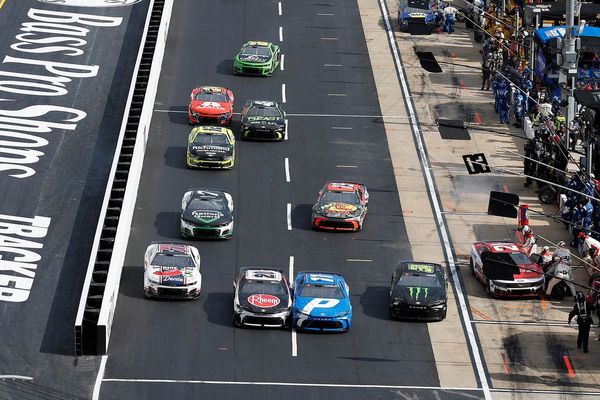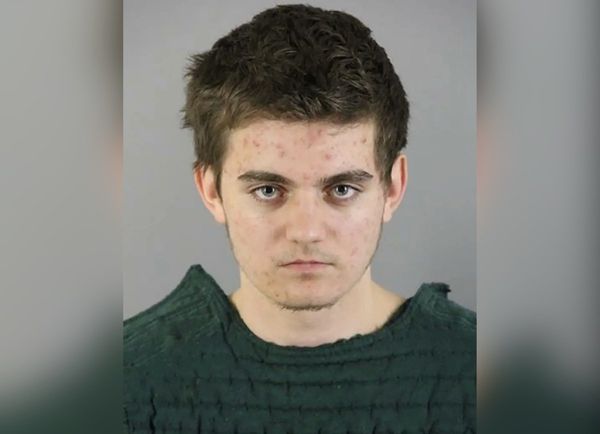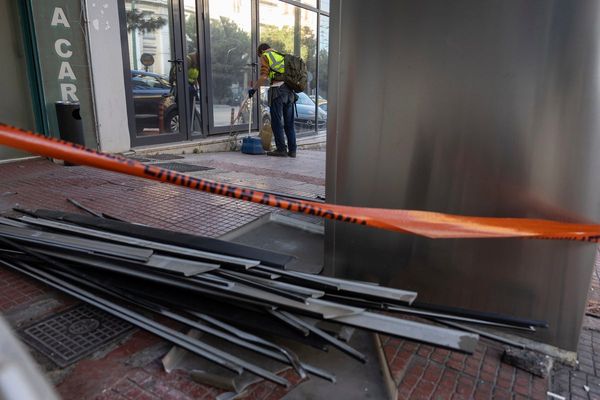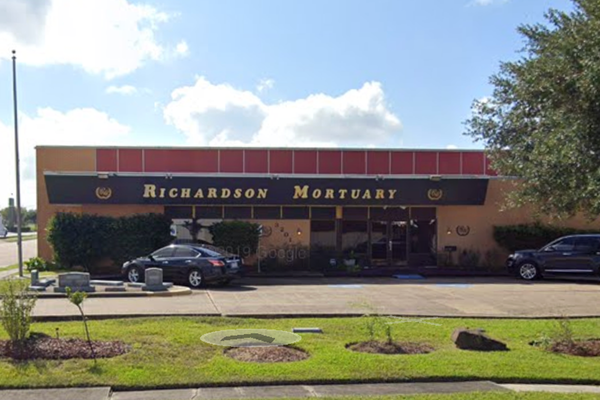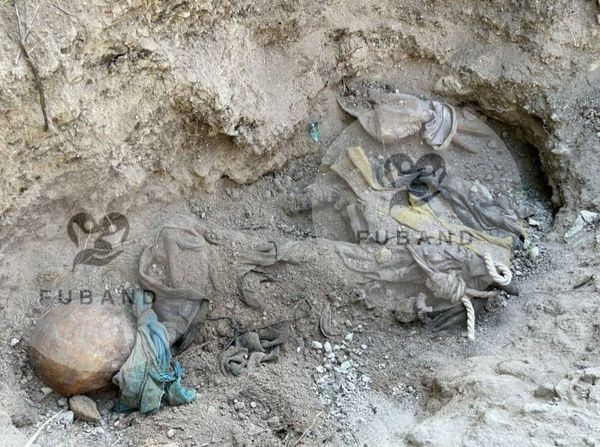
It’s that time of year. Blossom is on the trees, the air is warming up and David Hockney has a show.
Five years ago, Hockney spent lockdown in his garden in Normandy painting the spring, bud by bud, sharing his iPad pictures with whoever was in his address book, like the last artist on Earth sending out signals of hope. The slogan he coined then – “Do remember they can’t cancel the spring” – is now written over the entrance to the Fondation Louis Vuitton, as urgent as it was during Covid.
His spring pictures are here too. As well as iPad paintings, there are actual oils and acrylics of Normandy, including ravishing trees in blossom that pay homage to Van Gogh. In his latest self-portrait, Hockney sits in his London garden and beside him sprout yellow daffodils.
Hockney is as reliable as those daffodils, returning at 87 as he did at 82 to show us how beautiful the world is in spite of those who try so hard to ruin it. His eye for nature is what links his art now with his early works. His 1968 portrait of Christopher Isherwood and Don Bachardy is a confident assertion of gay partnership and a meeting of generations as the 60s star Hockney depicts the 1930s author of Goodbye to Berlin. But I can’t take my eyes off the fruit bowl with its abundance of yellow and orange bulging natural forms. Hockney never undervalues the simple things – one captivating 1967 canvas is called Some Neat Cushions. Their neatness makes you happy. For the other thing that connects his art across nearly seven decades is, you realise in this gloriously unrepressed choice of his early works, the pleasure principle. A whole series of paintings of men in showers, alone or together, and a sweaty Berlin nightclub scene show how heroically yet unselfconsciously he depicted then-illegal gay life in the early 1960s. It was simply his experience, as he attests in his 1961 canvas We Two Boys Together Clinging. What else should he paint?
But wait. Isn’t this exhibition setting itself up for a dying fall, even aesthetic embarrassment, in starting with such a superb selection of Hockney’s great 1960s and early 1970s paintings? They are magnetic yet only occupy two rooms. No sooner have you lost yourself in the frozen heat and enigmatically stilled passions of his LA swimming pools, tall straight palms and sprinkled lawns, than you are suddenly plunged into the rolling landscapes of East Yorkshire that Hockney painted early this century. All very well, a critic might sniff, but aren’t the works of his senior years that dominate this show a bit lacking in the genius of his youth?
Shockingly, they are not. In a hang Hockney himself had final say over, the shift from California to Yorkshire and then Normandy, from sexy showers to rain showers, is gripping and compelling. Giant flossy white hawthorn blossoms spill over a Yorkshire road, patchwork emerald fields are laid out in the sun under candy floss clouds. Sharp yet subtle light and shadow move on the clouds and the villages below them. Hockney doesn’t need glamour or desire to gratify his eyes – just a blustery day in the country.
Conveniently for Paris, his vast 2007 painting Bigger Trees Near Warter has always had a French subtitle: “ou Peinture sur le Motif pour le Nouvel Age Post-Photographique”. It’s a jokey reference to “painting on the Motif”, a 19th-century French term for taking your canvas out in the country to work from nature. That was Hockney’s thinking when he settled in Bridlington: he wanted to paint like the French impressionists yet with eyes remade by, or in recovery from, “the post-photographic age”. He pays tribute to impressionism again in one of the most recent paintings here, his own view of Monet’s garden, called Giverny by DH. Even as Hockney’s style has become rawer and simpler in the 21st century, his thinking has become more theoretical.
You can learn a lot in this exhibition – not just about photography and the human eye but art history and perspective. At the start of the century, he published Secret Knowledge, in which he claims Renaissance artists made covert use of early camera-like devices. The montage of museum reproductions he made in 2000 to illustrate his thesis, called The Great Wall, is shown as an artwork in its own right. Did Van Eyck have a camera? I don’t know. But how many other contemporary artists find inspiration in the ways people saw things six centuries ago?
In his 1972 pearl, Portrait of an Artist (Pool with Two Figures), there’s plenty going on that doesn’t meet the eye, especially once you know the man gazing at the swimmer is Peter Schlesinger whose relationship with Hockney was nearing its end. But this midday in white satin is above all a feast of looking: while Schlesinger looks into the water Hockney’s eye takes in more – Schlesinger’s pink jacket, the complex ripples and shimmers of the blue and white water, the misty limes and violets of the hills beyond. It’s as accurate and encompassing as a Renaissance painting, aerial perspective and all. Seeing it here, hypnotised, I realise the downcast gaze of Schlesinger has the modesty and mystery of a Piero della Francesca saint.
The exhibition climaxes on a top floor where you feel you’ve ascended to in a joyous pilgrimage of colour and sincerity, with a blast of high emotion. It is almost valedictory. Hockney’s new self-portrait, fun but frail, hangs near two new paintings inspired by the visionary artists Munch and Blake that tell us: “Less Is Known than People Think”. Together with a sublime Nordic sun picture they feel like meditations on what comes next.
Then you enter an immersive recreation of his opera designs, which engrossed him for years before deafness reduced his enjoyment of music. As you let his intense blues cascade over you to the strains of Wagner’s Tristan und Isolde, you realise how deep and sustaining a love for life this man feels and can communicate. By this time I had tears in my eyes. Life is a dream, I finally understood, and Hockney dreams it well.
David Hockney 25 is at Fondation Louis Vuitton, Paris, from 9 April to 31 August 2025
David Hockney by Norman Rosenthal (Thames & Hudson Ltd, £45). To support the Guardian and Observer, order your copy at guardianbookshop.com. Delivery charges may apply.

